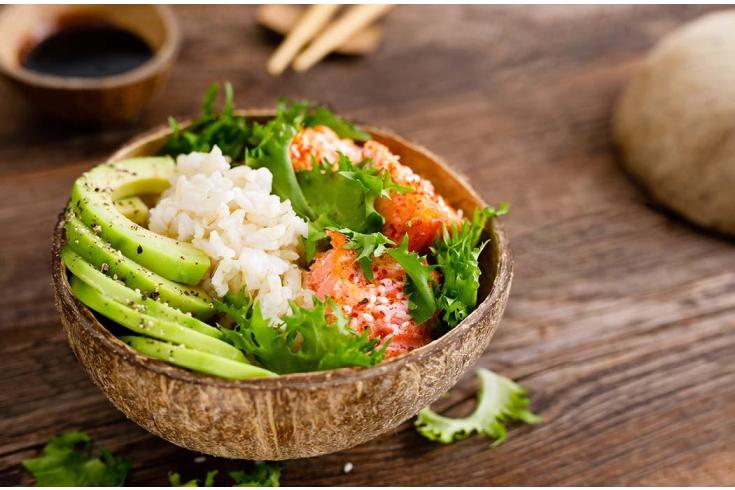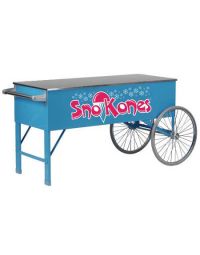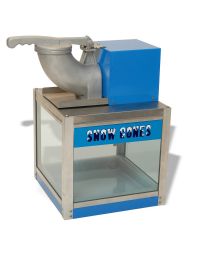The cuisine of Hawaii incorporates five distinct styles of food, reflecting the diverse food history of settlement and immigration. Hawaiian cuisine is a fusion of many different culinary traditions but with a focus on local and organic ingredients. It's heavy on seafood, fruits and vegetables, grains, and meats, including lots of pork and chicken. Many dishes also include Asian, Indian, and American flavors.
The pre-contact period of Ancient Hawaii had an engineering genius, constructing vast irrigation systems to supply water to terraced farms. They grew what is known as "canoe crops," the first Hawaiians brought with them to the islands. These included Kalo (taro), uala (sweet potato), maia (banana), ko (sugarcane), and ulu (breadfruit). The ocean provided a variety of fish, but it was the Hawaiians' innovative construction of massive fishponds that allowed them to maintain a constant supply.
After first contact with Westerners in 1778, European and American cuisine arrived along with the missionaries and whalers. They introduced their foods and built large sugarcane plantations starting the modernization of Hawaii and its cuisine.

Hawaiian Cuisine History
Pre-colonialization Hawaiian Cuisine was mostly based on what locals could get on the island. The pre-contact Hawaiian's genius for engineering, constructing vast irrigation systems to supply water to terraced farms, helped them establish what is known as Canoe crops. These include taro, sweet potatoes, bananas, sugarcane, and breadfruit. They also relied on the ocean to provide a variety of fish, but the native Hawaiians constructed massive fishponds to keep them in constant supply of popular fish.
Then, in 1778, whalers, missionaries, and traders arrived in Hawaii, bringing homeland cuisine with them. These early visitors started to report back to their homelands about the island paradise leading to 1852 when waves of contract laborers started to come to Hawaii to work on the newly created sugar plantations. They brought with them traditional recipes and unique blends of ingredients from China, Japan, Portugal, Puerto Rico, Okinawa, and the Philippine Islands.
Following Statehood and World War II, Hawaii's tourism numbers grew, along with its hotels. Restaurants that were catered to the tourists used food that was shipped from elsewhere over long distances and copied American recipes. This led to unmemorable meals and negative perceptions about Hawaii's food scene around the world. It wasn't until 1991 that a group of 12 Hawaii chefs got together to change everything.
A food revolution was started by popular chefs Sam Choy, Philippe Padovani, Roger Dikon, Gary Strehl, Roy Yamaguchi, Amy Ferguson Ota, Jean-Marie Josselin, George Mavrothalassitis, Beverly Gannon, Peter Ellman, Peter Merriman, and Alan Wong. The group's vision was to put Hawaii on the map as a major culinary destination. They aimed to build a network of farmers and ranchers they could source from, combining locally grown food with the multiple ethnic flavors already present in Hawaii for a grand fusion of the islands' unique resources. A pristine environment mixed with a colorful array of cultures.
These chefs started to source many of their ingredients within the islands. Cattle raised on the upland pastures of Hawaii Island, fruits and vegetables grown from volcanic soil in Upcountry Maui, some of the highest quality fish in the world, Waialua chocolate and hearts of palm, and the foundational canoe crops brought by the Native Hawaiians all those years ago.
Top Hawaiian Cuisine Chef’s
Hawaii's food culture is rich in diversity, thanks to the melting pot of its many cultures. You can find Asian, European, and American flavors in its food, and you will also notice the many influences of its Pacific Islander culture. The state's chefs are inspired by the fresh, natural ingredients of the islands and create dishes that are as unique as Hawaii itself.
Lee Anne Wong
Wong moved to Honolulu, Hawaiʻi, in late 2013. In 2014, she opened and continued to run Koko Head Cafe. Wong joined the Hawaiian Airlines culinary team in 2015 and became executive chef in 2018. The Coconut recipe is one of Alan Wong's signature desserts. Her King Street restaurant sells between 20 and 40 each night. Wong has even prepared it for President Barack Obama and first lady Michelle during their annual December vacations to Oahu.
Sheldon Simeon
Born in Hilo, Chef Sheldon Simeon acquired his love for cooking from his parents. After serving as the executive chef at Maui's Mala Wailea, he was named in Hawaii Magazine's Top 5 Best Hawaiian Chefs of 2014 and voted FOOD & WINE Magazine's 2014 People's Best New Chef for the Pacific & Northwest. Earlier this year, Simeon opened Tin Roof in Kahului.
Sam Choy
Sam Choy has over 20 years in the kitchens of noted hotels and resorts on the mainland and Hawai'i. After running various restaurants around the islands, Sam has moved on to appearing on various TV cooking shows and writing cookbooks. He has authored 16 cookbooks, and his signature recipe sauces and dressings are available in local food store chains. Choy is a four-time nominee for the James Beard Best Pacific Regional chef award, which he won in 2004. He is often nicknamed the "Godfather of Poke" and is known as the Culinary Ambassador of the Big Island.
Roy Yamaguchi
He is known for Hawaiian-inspired cuisine, an eclectic blend of California-French-Japanese cooking traditions created with fresh ingredients from the Islands.[Yamaguchi, founded and chairs the Hawaii Food & Wine Festival. Roy maintains six locations in Hawaii: Waikiki, Hawaii Kai, Kaanapali, Waikoloa, Ko Olina, and Turtle Bay.
George Mavrothalassitis
Known as one of the cofounders of Hawaii Regional Cuisine, Mavrothalassitis is known for his pairings of wines with each dish in a multicourse meal. In 1988 he came to Hawaii when he was recruited to be the executive chef at the Halekulani Hotel in Honolulu, Hawaii. He was executive chef of the Four Seasons Hotel in Maui and the chef de cuisine of Seasons Restaurant. Then in 1998, he opened his restaurant, named for his nickname, Chef Mavro in Honolulu.
Peter Merriman
A culinary pioneer in Hawaii for over 25 years, Merriman is a vocal supporter of Hawaii's farmers, ranchers, and fishermen. His restaurants showcase island-grown and harvested foods through simple preparations that reflect the myriad flavors of Hawaii's multiculturalism. In 1988, Merriman opened his signature upcountry restaurant, Merriman's, in Waimea on the Big Island of Hawaii. Hula Grill, touted as "the best fish house in the islands" by Honolulu Magazine, brought the concepts of Hawaii regional cuisine to a beachside setting. Merriman's Kapalua in Kapalua Maui. Merriman's Kapalua was voted one of Trip Advisor's Top 10 Fine Dining Restaurants in the country in 2017. He also owns and operates Merriman's Fish House, and Moku Kitchen.
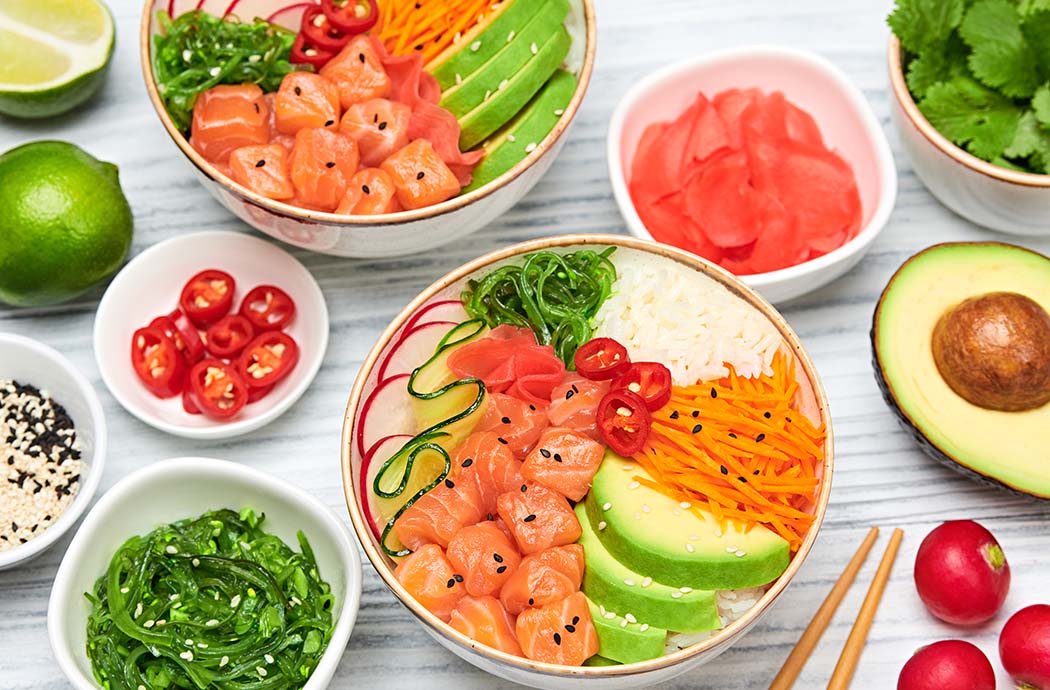
What are some traditional Hawaiian foods?
Hawaiian cuisine consists of a wide range of different foods and dishes, as well as a variety of different recipes. These dishes may be influenced by other cultures and may also be quite diverse themselves. Many of these types of Hawaiian cuisine reflect the ethnic diversity of the state. Many of these foods can be traced back to the immigrants who migrated to Hawaii throughout the years.
Poi
In Samoa and other Pacific islands, poi is a thick paste of pounded bananas or pineapples mixed with coconut cream; the word originally denoted the action of pounding the food to a pulp. In Hawaii, where poi is a staple of local cuisine, taro root is used almost exclusively for its preparation.
Poi RecipeHawaiian Plate
A true plate lunch is made up of 2 scoops of rice (or one big scoop), a healthy portion of mac salad, and an "entrée" (usually meaning some kind of protein). The "entrée" is typically grilled teriyaki chicken, Kalua pork, or teriyaki beef.
Hawaiian Plate RecipeSaimin
Traditionally consisting of soft wheat egg noodles served in hot dashi garnished with diced green onions and a thin slice of kamaboko, modern versions of saimin include additional toppings such as char siu, sliced Spam, sliced egg, or shredded nori.
Saimin RecipePoke
Poke is diced raw fish served either as an appetizer or a main course and is one of the main dishes of Native Hawaiian cuisine. Traditional forms are Aku (skipjack tuna) and heʻe (octopus). A modern version is sometimes called a poké bowl and has the ingredients arranged in a grouped way rather than mixed.
Poke RecipeLuau Stew
Luau stew is made by cooking luau leaves (which come from the taro plant) with water and a bit of salt. Luau stew served over rice, with kalua pig, seaweed, sweet potato, and breadfruit.
Luau Stew RecipePasteles-
The pastele is a meat pie flavored with the Caribbean achiote spice, lined with grated green bananas and stuffed with stewed pork and olives. Brought over after Puerto Rican farmers moved sugar plantations to the island after a hurricane in 1899 devastated Puerto Rican agriculture.
Pasteles RecipeManapua-
They're big and fluffy buns that come steamed (more traditional) or baked. The classic manapua is filled with char siu. Char siu is Chinese roast pork, but for manapua, we use a Hawaii-ized char siu marinade recipe that includes oyster sauce, sugar, five-spice, Hawaiian salt, honey, and red food coloring.
Manapua RecipeLoco Moco
There are many variations, but the traditional loco moco consists of white rice, topped with a hamburger, a fried egg, and brown gravy. Loco Moco was created in the 1940s when some boys dining at the Lincoln Grill in Hilo, Hawaii, asked the waitress to serve them a dish they could afford. They threw out the idea of rice, beef, and gravy, and the rest is history.
Loco Moco RecipeKalua Pig
Simply put, the word means "(from the) pit," so basically, any food that has been cooked in an underground oven called an imu is considered "kalua." This is a slow cooking method used for centuries but can be recreated in a slow cooker. You can cook more than just pork with this recipe, as traditional Hawaiians used this method to cook everything from beef to fish.
Kalua Pig RecipeLomi Lomi Salmon
Lomi Lomi salmon is a very popular traditional Hawaiian side dish. It is made by mixing together: salted salmon, tomatoes, onions, and green onions. All the individual ingredients are chopped into bite-size pieces, and it's a dish you can eat with a spoon.
Lomi Lomi Salmon Recipe
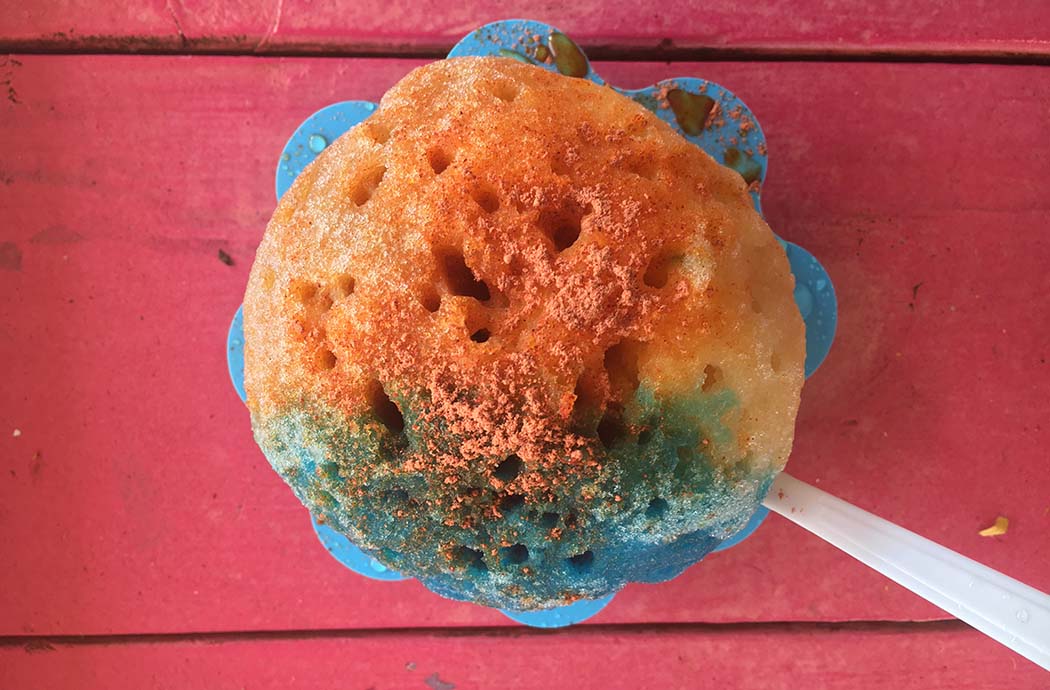
What are some top Hawaiian deserts?
These island-inspired sweets include ingredients like coconut and vanilla, making them the perfect way to end any Hawaiian meal. These desserts can be cakes, pies, cookies, or other sweets. They are usually made with tropical fruits that grow in the Hawaiian climate, such as pineapple, coconut, or mango.
Shaved Ice
Shaved ice is a large family of ice-based desserts made of fine shavings of ice or finely crushed ice and sweet condiments or syrups. The syrup is added after the ice has been frozen and shaved. Shaved ice is thought to have originated in Japan in the 1860s, where it's called kakigori. It came to Hawaii with Japanese plantation workers and quickly embedded itself in Hawaiian food culture.
Shaved Ice RecipeHawaiian Butter Mochi
Hawaiian Butter Mochi is Hawaii's version of the blondie/brownie. Hawaiian butter mochi is kind of like a cross between cake and mochi. Unlike Japanese mochi, which is filled with ice cream, Hawaiian Butter Mochi is baked. The result is a chewy but not gummy, slightly coconutty, and delicious dessert.
Hawaiian Butter Mochi RecipeKulolo
Kūlolo is a popular Hawaiian dessert made of ground Kalo or Taro, raw sugar, and coconut milk. Traditional Kulolo is made in an imu or underground oven and steamed or baked for hours. Today, Kulolo is often baked in the oven or steamed in a steamer.
Kulolo RecipeHaupia Pie
Haupia pie is a traditional Hawiian dessert made from thickened coconut milk and chocolate and layered into a pre-baked pie crust and topped with whipped cream. It can have many different variations but the most popular is probably the chocolate variation.
Haupia Pie RecipeCoco Puffs
Coco Puffs are a small puffed pastry filled with a creamy chocolate pudding and topped with a thick, semi-hard, vanilla, and coconut frosting. They are similar to an eclair. Coco Puffs come in two flavors. Original which is filled with chocolate pudding and topped with plain chantilly and Green Tea, filled with green tea custard and topped with green tea chantilly.
Coco Puffs RecipeCrispy Manju
Hawaii has a specific style of Manju, unlike the Japanese version. Baked and flaky, with fillings like sweet potato, coconut, and even apples. Manju is small, three-bite size pastries. The filling is wrapped with wheat pastry dough. It's then baked to crispy perfection.
Crispy Manju RecipeGuri Guri
Guri-guri is a cross between sherbet and ice cream. It is typically made with a mixture of guava juice, any type of lime soda, and condensed milk. Guri-guri comes in two flavors: pineapple and strawberry.
Guri Guri RecipeMalasadas
Malasadas, as they are known in Hawaii, are yeast-leavened doughnuts enriched with eggs, butter, and sometimes evaporated or fresh milk. After frying, they are rolled in sugar. Malasada is a Portuguese dessert that was brought to the islands by immigrants that traveled to Hawai'i to work on the plantations.
Malasadas RecipeLilikoʻi Bars
Liliko'i bars are a Hawaiian twist on lemon bars. Sweet yet tangy passion fruit curd baked atop a delicious buttery shortbread crust and sprinkled with powdered sugar. Liliko'i is the Hawaiian word for passion fruit. It is a sweet yet tart fruit that is grown in tropical and subtropical regions.
Liliko’i Bars RecipeGuava Chiffon Cake
Guava chiffon cake is one of Hawaii's most popular and favorite cakes. The cake starts with adding guava juice to a strawberry cake mix. A cream cheesy whipped topping layer is lathered on top and topped with a guava gel.
Guava Chiffon Cake Recipe
What are some of the top-rated restaurants in Hawaii?
From fine dining to family-style comfort food, these top-rated restaurants offer a wide variety of dining experiences. Honolulu has the most diverse dining choices in the state, while Waikiki and the North Shore are best suited for visitors who want to indulge in seafood and fresh Pacific Rim cuisine. The island of Maui has a large number of farm-to-table restaurants with fresh, locally-grown produce.
Vintage Cave
A private club with a restaurant featuring a "French-Japonais" menu in Honolulu, Hawaii. The restaurant contains a collection of artwork that includes a lithograph series by Pablo Picasso. The restaurant is open to the public but also offers a private membership program that entitles access to vintage wines & its various facilities. Celebrities, politicians, and foodies around the world visit the Vintage Cave for the finest in Hawaiian dining.
Visit Vintage CaveChef Chai
Known for fusing fresh Hawaii ingredients with the exotic flavors of Asia, Chef Chai has created a culinary style that reflects the cultural diversity of Oahu and the Hawaiian Islands. Chef Chai was voted the winner of the 2011 Hale Aina CHEF'S CHOICE award, selected by Hale Aina Award-winning Chefs. Come see what locals and visitors choose when they select Chef Chai.
Visit Chef ChaiMoku Kitchen
Moku Kitchen brings Hawaii's rich upcountry farming and ranching heritage to downtown Honolulu's urban lifestyle. Moku Kitchen reminds me of a simple time when food was locally-sourced and cooked over an open fire on the ranch. Named after the Hawaiian word for island, Moku is a gathering spot where anyone goes who is seeking a taste of Hawaii.
Visit Moku KitchenRoy’s Hawaii Kai
Where it all started more than 30 years ago. The "Original Roy's" is truly a family restaurant and still gives the same feeling as it did in 1988. Belonging to Roy Yamaguchi, it is one of the first and most well-known restaurants of the Hawaiian food revolution. The open kitchen designs give customers views from the dining room. This gives you a front-row view of elite Hawaiian dining. It is a place where everyone from first time visitors to island locals come to enjoy high-class Hawaiian cuisine time and time again.
Visit Roy’s Hawaii Kai
